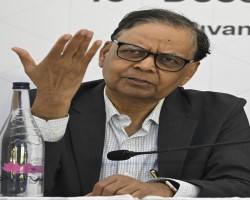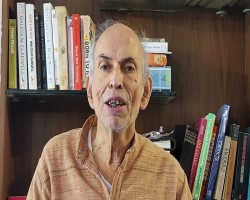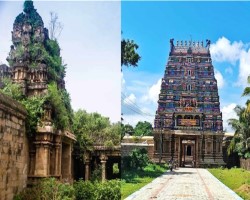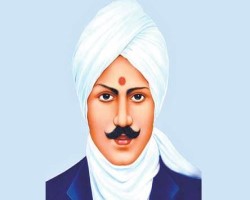UPSC Current Affairs
TABLE OF CONTENTS |
| National |
|---|
|
|
|
Why in the news?
The Centre has announced that it will bear the additional cost of ₹425.62 crore on account of inflation in food material cost under the Centrally sponsored PM POSHAN Scheme in the financial year 2024-25. Key Takeaways: 📍Under the scheme, one hot cooked meal is served to 11.7 crore students studying in Balvatika and Classes 1to 8 in 10.24 lakh government and government-aided schools. 📍On the basis of the inflation index provided by the Labour Bureau, the Education Ministry has enhanced the material cost of pulses, vegetables and oil by 13.7%. 📍“The material cost is enhanced from ₹5.45 to ₹6.19 for primary and Balvatika classes and from ₹8.17 to ₹9.29 for upper primary classes with effect from December 1.” 📍The material cost could not be revised during 2023-24; therefore, the inflation value of items under PM POSHAN basket for both 2022-23 (6.45%) and 2023-24 (6.74%) has been considered for enhancement of cost. 📍Each Balvatika and primary school student is eligible for 20 grams of pulses, 50 grams of vegetables and five grams of oil. Similarly, each upper primary student is eligible for 30 grams of pulses, 50 grams of vegetables and seven grams of oil. About Pradhan Mantri Poshan Shakti Nirman Scheme: 📍It was earlier known as the National Programme of Mid-Day Meal in schools. 📍In September 2021, Mid-Day Meal Scheme was renamed as Pradhan Mantri POSHAN Scheme. 📍It is a centrally sponsored scheme under which one hot cooked meal is served to students studying in Balvatika and classes I to VIII, in Government and Government-aided schools on all school-days. 📍The scheme aims at providing nutritional support and enhancing school participation of students. 📍The objectives of the Scheme are to address two of the pressing problems for the majority of children in India, viz. hunger and education by: 📍Improving the nutritional status of eligible children in Government and Government aided schools. 📍Encouraging poor children, belonging to disadvantaged sections, to attend school more regularly and help them concentrate on classroom activities. 📍Providing nutritional support to children of the elementary stage in drought-affected and disaster affected areas during summer vacation. 📍Recently, on the basis of the inflation index provided by the Labour Bureau, the Ministry of Education, Government of India, has enhanced the ‘Material Cost’ by 13.70 %. 📍Nodal Ministry: Ministry of Education |
| Economy |
|
|
|
Why in the news?
Arvind Panagariya, Chairman, 16th Finance Commission, on December 10 termed the grievance of States regarding the Centre’s increasing reliance on cesses and surcharges as a “complicated issue.” Key Takeaways: Cesses and surcharges collected by the Centre need not be shared with the States. Their share in the gross tax revenue has risen over the years, prompting States to demand that the levies should be capped and that anything beyond it should flow into the divisible pool. The issue had also found expression at the Finance Ministers’ Conclave organised by Kerala in September this year in the run-up to the Commission’s visit. Dr. Panagariya observed that the share of States in the divisible pool has risen from 32% in the 13th Finance Commission to 42% under the 14th. The Centre, he noted, is entitled to collect cesses and surcharges under a Constitutional provision. What Is A Cess? Different from the usual taxes and duties like excise and personal income tax, a Cess is imposed as an additional tax besides the existing tax (tax on tax) with a purpose of raising funds for a specific task. For example, the Swachh Bharat cess is levied by the government for cleanliness activities that it is undertaking across India. The Union government is empowered to raise revenue through a gamut of levies, including taxes (both direct and indirect), surcharges, fees and cess. A cess, generally paid by everyday public, is added to their basic tax liability paid as part of total tax paid. Article 270 of the Constitution allows cess to be excluded from the purview of the divisible pool of taxes that the Union government must share with the States. Divisible Pool: A divisible pool is a portion of Gross Tax Revenue (GTR) that is distributed between the Centre and the States. It consists of all taxes, except surcharges and cess levied for specific purpose, net of collection charges. Surcharge: Surcharge is an additional tax or charge levied as a percentage of existing tax amount, but without any specific purpose. It is levied if the size of tax base exceeds a certain threshold limit. The revenue earned via surcharge is solely retained by the centre and not shared with states. Example- individuals with net income exceeding Rs.50 Lakhs but not exceeding Rs. 1 Crore, a surcharge of 10% is levied on tax liability. About Finance Commission: The Finance Commission, established under Article 280 of the Constitution of India, is to be constituted every fifth year or earlier, as per clause (1) of that article. It is a constitutional and quasi-judicial body. Accordingly, the first Finance Commission was constituted in 1951. The President of India appoints a finance commission every five years or at an earlier time that he considers necessary. Its primary role is to review the financial position of the states and recommend measures to enhance the fiscal capacity of both the central and state governments. The Commission plays a crucial role in ensuring the equitable distribution of financial resources between the centre and the states, thereby promoting balanced economic growth across the country. Finance Commission Composition: The Finance Commission consists of a Chairman and four other members appointed by the President of India. They serve for a term specified by the President and are eligible for reappointment. The Constitution empowers Parliament to set the qualifications for the Commission's members and outline the selection process. Following this constitutional provision, Parliament has defined the qualifications required for both the Chairman and the members. The Chairman must possess experience in public affairs, while the four other members are to be chosen from the following categories: A judge of a High Court or an individual qualified for such an appointment. A person with specialized knowledge in finance and government accounting. An individual with extensive experience in financial matters and administration. A person who has specialized knowledge in economics. Finance Commission Functions: The Finance Commission is tasked with making recommendations to the President of India on several crucial financial matters. The President then presents such reports to both Houses of Parliament, accompanied by an explanatory memorandum detailing the actions taken on its recommendations. However, the Centre is not legally bound to implement the suggestions made by the Finance Commission. The key areas for which the Finance Commission provides recommendations include: Vertical Devolution: The share of states in the divisible pool of central taxes. Horizontal Distribution: The allocation of resources among states based on a formula that reflects their fiscal needs, capacities and performance. Grants-in-aid: The additional transfers to specific states or sectors that are in need of assistance or reform. Among the grants made by the 13th FC, two important ones were justice delivery and the statistical system. The Department of Justice identified several initiatives that needed support, including increasing the number of courts working hours, enhancing support to Lok Adalat, providing additional funding to State Legal Services Authorities, promoting the Alternate Dispute Resolution mechanism, enhancing the capacity of judicial officers and public prosecutors through training programmes, and supporting the creation of a judicial academy in every state to facilitate such training. 16th Finance Commission: The Sixteenth Finance Commission was constituted on 31.12.2023 with Shri Arvind Panagariya, former Vice-Chairman, NITI Aayog as its Chairman. Now the following members are appointed to the Commission with the approval of the President of India. Members: Ajay Narayan Jha, Member Annie George Mathew, Member Manoj panda, Member Soumya Kanti Ghosh, Part-Time Member Ritvik Ranjanam Pandey, Secretary The Sixteenth Finance Commission has been requested to make its recommendations available by October, 31, 2025, covering an award period of 5 years commencing 1st April, 2026. 15th Finance Commission: The Finance Commission (FC) is a constitutional body, that determines the method and formula for distributing the tax proceeds between the Centre and states, and among the states as per the constitutional arrangement and present requirements. Under Article 280 of the Constitution, the President of India is required to constitute a Finance Commission at an interval of five years or earlier. The 15th Finance Commission was constituted by the President of India in November 2017, under the chairmanship of NK Singh. Its recommendations will cover a period of five years from the year 2021-22 to 2025-26. |
|
|
|
Previous Years Questions:
Q) With reference to the Fourteenth Finance Commission, which of the following statements is/ are correct? (UPSC Prelims 2015) 1. It has increased the share of States in the central divisible pool from 32 percent to 42 percent. 2. It has made recommendations concerning sector-specific grants. Select the correct answer using the code given below. (a) 1 only (b) 2 only (c) Both 1 and 2 (d) Neither 1 nor 2 Ans: (a) Frequently Asked Questions (FAQs): Q1. What is the term of the 16th Finance Commission? Ans: The 16th Finance Commission's term will be 5 years, commencing 1st April 2026. Q2. What is the tenure of the Finance Commission? Ans: The Finance Commission is constituted every five years, or earlier if necessary. Q3. Who is the Chairman of the 16th Finance Commission? Ans: The Chairman of the 16th Finance Commission is Arvind Panagariya. Q4. What is Article 280 of the Constitution of India? Ans: Article 280 provides for the establishment of the Finance Commission by the President to recommend financial relations between the Centre and the states. Q5. Who was the first finance commissioner of India? Ans: The first Chairman of the Finance Commission was K.C. Neogy, appointed in 1951. |
| Science and Technology |
|
|
|
Why in the news?
The Indian Space Research Organisation (ISRO) and the Indian Navy successfully conducted “Well Deck” recovery trials for the Gaganyaan mission off the coast of Vishakhapatnam. Key Takeaways: 📍This crucial test involved simulating the recovery of the Crew Module, which will be used to bring astronauts back to Earth after their mission. 📍The trials took place aboard a well-deck ship from the Eastern Naval Command, designed to flood its deck with water, allowing for the safe retrieval of boats and spacecraft. 📍During the Gaganyaan mission, once the Crew Module touches down in the sea, it is essential to recover the crew quickly and comfortably. The well deck method enables the module to be towed into the ship, where astronauts can exit safely. 📍Using a mock-up of the Crew Module that simulated its mass and shape, ISRO and Indian Navy personnel executed a series of operations during the trial. 📍These included attaching a recovery buoy, towing the module, maneuvering it into the well deck, positioning it on a fixture, and draining the water from the deck. 📍With this successful trial, India moves closer to becoming one of the few nations capable of conducting crewed space missions, showcasing its growing prowess in space exploration. |
|
|
|
IN SHORT:
The Indian Space Research Organisation (ISRO) and the Indian Navy successfully conducted “Well Deck” recovery trials for the Gaganyaan missio. Where: Off the coast of Vishakhapatnam. |
| Awards |
|
|
|
The United Nations on December 10 recognised ecologist Madhav Gadgil with the annual Champions of the Earth award, the UN’s highest environmental honour, for his seminal work in the Western Ghats.
Mr. Gadgil, the only Indian on the list of this year’s award recipients, chaired the government-constituted Western Ghats Ecology Expert Panel to study the impact of population pressure, climate change, and development activities on the ecologically fragile region in India. The panel recommended in 2011 that the entire hill range be declared an Ecologically Sensitive Area (ESA) and divided it into three Ecologically Sensitive Zones. The other five awardees include, Sonia Guajajara, Brazil’s Minister of Indigenous Peoples honoured in the Policy Leadership category; Amy Bowers Cordalis, an Indigenous rights advocate honoured in the Inspiration and Action category from US; Gabriel Paun, a Romanian environmental defender honoured in the Inspiration and Action category; Lu Qi, a Chinese scientist honoured in the Science and Innovation category, has worked in science and policy sectors for three decades helping China reverse degradation and shrink its deserts; Sekem, a sustainable agriculture initiative honoured in the Entrepreneurial Vision category, is helping farmers in Egypt transition to more sustainable agriculture. About Champions of the Earth award: The United Nations Environment Programme (UNEP) established Champions of the Earth in 2005 as an annual awards programme to recognize outstanding environmental leaders from the public and private sectors and from civil society. The annual Champions of the Earth award, the UN’s highest environmental honour, recognises trailblazers at the forefront of efforts to protect people and the planet. Since 2005, the award has recognised 122 laureates for outstanding and inspirational environmental leadership. Award details: Typically, five to seven laureates are selected annually. Each laureate is invited to an award ceremony to receive a trophy, give an acceptance speech and take part in a press conference. No financial awards are conferred. The prize includes $15,000 of financial support. |
|
|
|
IN SHORT:
India’s veteran ecologist, Madhav Gadgil has been named as one of the six ‘Champions of the Earth’ by the United Nations Environment Programme (UNEP) for 2024. Sonia Guajajara, Brazil’s Minister of Indigenous Peoples honoured in the Policy Leadership category; Amy Bowers Cordalis, an Indigenous rights advocate honoured in the Inspiration and Action category from US; Gabriel Paun, a Romanian environmental defender honoured in the Inspiration and Action category; Lu Qi, a Chinese scientist honoured in the Science and Innovation category, has worked in science and policy sectors for three decades helping China reverse degradation and shrink its deserts; Sekem, a sustainable agriculture initiative honoured in the Entrepreneurial Vision category, is helping farmers in Egypt transition to more sustainable agriculture. UNEP established Champions of the Earth in 2005. The prize includes $15,000 of financial support. Useful information for all competitive exams: United Nations Environment Programme (UNEP): The United Nations Environment Programme (UNEP) is responsible for coordinating responses to environmental issues within the United Nations system. Formation: 5 June 1972 Headquarters: Nairobi, Kenya Executive Director(8th): Inger Andersen (since 2019) (Denmark) Parent organization: United Nations |
|
|
|
Context:
The 1,300-year-old Abathsahayeshwarar Temple in Thukkatchi in Thanjavur district has been chosen by UNESCO to receive the Award of Distinction - 2023 for having been conserved keeping its heritage intact. Historical Significance: The temple, which is believed to have been constructed by Kings Vikrama Chola and Kulothunga Chola, is said to have had five prakarams previously. The village was known as Vikrama Chozheeswaram and Kulothunga Chola Nallur. Kulothunga Chola established the idol for Aadhi Sarabeshwarar. The temple houses many deities, including Soundaryanayaki Ambal and Ashtabhuja Durga Parameshwari. Restoration Process: The temple was in a bad shape. It have restored two prakarams by removing plants, trees, ensured strength of structures and painted gopurams. Nobody knew when the last kumbhabhishekam was conducted. It was performed the consecration after the restoration in September 2023. The revival of the Abathsahayeshwarar Temple in Tamil Nadu has breathed new life to a once abandoned religious site, employing an interdisciplinary methodology which connects modern conservation science with traditional construction practices. In this spirit, engineering expertise and the knowhow of Hindu temple builders, sthapathi, were applied in structural conservation and renewal of decorative works in keeping with vernacular artisanal traditions. UNESCO’s Recognition: UNESCO praised the restoration for revitalising the temple, combined modern conservation techniques with traditional methods. Local craftsmen, known as sthapathis, ensured the integrity and aesthetics were preserved and this project sets a precedent for restoring other historic temples in Tamil Nadu. Government Support: The Hindu Religious and Charitable Endowments (HR&CE) department announced the recognition. Minister P.K. Sekarbabu brought into light government efforts. Chief Minister M.K. Stalin has allocated ₹100 crore annually for temple restorations. More temples have been identified for similar renovations, ensuring their heritage is maintained. About Abathsahayeswarar Temple: It is located in Thukkachi in Thanjavur district in Tamil Nadu. This temple is dedicated to Lord Dakshinamurthy (Lord Shiva). It is about 1,300 years old. This temple was built by King Vikrama Chola and Kulothunga Chola. Earlier there used to be five prakarams in this temple. The temple has many shrines for deities, including Soundaryanayaki Ambal, Ashtabhuja Durga Parameshwari, Aadhi Sarabeswarar, Pillayar, Murugan, Chandikeshwara, two Bhairavas, two Suryas and two Nagars. |
|
|
|
Useful information for all competitive exams:
UNESCO: Full name- United Nations Educational Scientific and Cultural Organization. UNESCO is a specialized agency of the United Nations whose objective is to promote world peace and security through international cooperation in education, arts, science and culture. UNESCO was established in the year 1945. Headquarters- Paris It is a world-class educational, scientific and cultural organization of the United Nations. Currently it includes about 195 member countries and 8 associate member countries. |
| Important Days |
|
|
|
Why in the news?
Prime Minister Narendra Modi will release a complete and annotated version of the works of Tamil poet and freedom fighter Subramania Bharati in New Delhi on December 11. The date marks the birth anniversary of the celebrated poet and social reformer. About Subramania Bharati: Subramania Bharati was an Indian writer and poet. He was also a freedom fighter and social reformer. He hailed from Tamil Nadu. He is known for his works in the field of women's emancipation. He also stood against child marriage. He worked to reform Brahmanism and religion. Subramania Bharati is considered one of the greatest Tamil literary figures. He is also regarded as the father of the modern Tamil style. His achievements in Indian literature and society are significant. Birth: 11th December 1882, in Ettayapuram, Madras Presidency. Brief Profile: Indian writer of the nationalist period (1885-1920) who is regarded as the father of the modern Tamil style. Also known as ‘Mahakavi Bharathiyar’. His strong sense of social justice drove him to fight for self-determination. Involvement during Nationalist Period: After 1904, he joined the Tamil daily newspaper Swadesamitran. This exposure to political affairs led to his involvement in the extremist wing of the Indian National Congress (INC) party. In order to proclaim its revolutionary ardour, Bharathi had the weekly newspaper named ‘India’ printed in red paper. It was the first paper in Tamil Nadu to publish political cartoons. He also published and edited a few other journals like “Vijaya”. Attended the annual sessions of INC and discussed national issues with extremist leaders like Bipin Chandra Pal, B.G. Tilak and V.V.S. Iyer. His participation and activities in Benaras Session (1905) and Surat Session (1907) of the INC impressed many national leaders for his patriotic fervour. Published the sensational “Sudesa Geethangal” in 1908. Bharati’s reaction to the Russian Revolutions of 1917, in a poem entitled “Pudiya Russia” (“The New Russia”), offers a fascinating example of the poet’s political philosophy. He was forced to flee to Pondicherry (now Puducherry), a French colony, where he lived in exile from 1910 to 1919. During this time, Bharati’s nationalistic poems and essays were popular successes. Important Works: Kaṇṇan pāṭṭu (1917; Songs to Krishna), Panchali sapatham (1912; Panchali’s Vow), Kuyil pāṭṭu (1912; Kuyil’s Song), Pudiya Russia and Gnanaratham (Chariot of Wisdom). Many of his English works were collected in Agni and Other Poems and Translations and Essays and Other Prose Fragments (1937). Death: 11th September 1921. |
|
|
|
IN SHORT:
Prime Minister Narendra Modi will release a complete and annotated version of the works of Tamil poet and freedom fighter Subramania Bharati in New Delhi on December 11. Subramania Bharati was an Indian writer and poet. He was also a freedom fighter and social reformer. He hailed from Tamil Nadu. Also known as ‘Mahakavi Bharathiyar’. Published the sensational “Sudesa Geethangal” in 1908. Important Works: Kaṇṇan pāṭṭu (1917; Songs to Krishna), Panchali sapatham (1912; Panchali’s Vow), Kuyil pāṭṭu (1912; Kuyil’s Song), Pudiya Russia and Gnanaratham (Chariot of Wisdom). |
| Reports And Indices |
|
|
|
Why in the news?
Kerala continues to lead as one of the most employable States in India, as indicated by the India Skills Report 2025. Key Takeaways: The report, published by talent assessment agency "Wheebox" in association with various agencies including the All India Council for Technical Education, Confederation of Indian Industry, and Association of Indian Universities, reveals that Kerala’s workforce maintains a strong employability rate of 71%, placing it on the fifth position after Maharashtra, Delhi, Karnataka and Andhra Pradesh. Kerala also joins the ranks of Tamil Nadu, Maharashtra and Uttar Pradesh as the top States. The State is especially preferred by female job aspirants. The study indicated that the overall employability in India continued to grow with 54.81% of the assessed youths found to be employable. Kerala’s Performance in Employability Rankings: State Ranking: Kerala secures the fifth position nationally, after Maharashtra, Delhi, Karnataka, and Andhra Pradesh. Age Group Employability: Kerala ranks second for employability in the 18-21 age group and third in employable talent in B.E./BTech and polytechnic domains. City Highlights: Thiruvananthapuram and Kochi rank as top cities for fostering computer and English skills and are highly preferred work locations. Key Highlights from India Skills Report 2025: State-wise Employability: Telangana leads in employable youth aged 18-21 (85.45%), followed by Haryana (76.47%), Maharashtra, Andhra Pradesh, and Kerala. Critical and Numerical Skills: Telangana and Karnataka top in critical thinking and numerical skills, while Kerala ranks third in computer skills. AI Skill Penetration: India outpaces global averages in AI talent, with a projected demand of 1 million AI professionals by 2026. The India Skills Report 2025 outlines a clear roadmap for aligning India’s talent ecosystem with global market demands: Vocational Training: Expanding access to industry-specific training across states, focusing on high-demand skills like AI, cybersecurity, and green energy. Cross-Border Collaboration: Strengthening partnerships with countries facing aging populations and skill shortages. Technology Integration: Leveraging AI and automation in education and assessments to prepare graduates for future roles. Diversity and Inclusion: Promoting a balanced workforce, with women now comprising 47.53% of the employable talent pool. Government’s Initiatives Related to Employment: Support for Marginalised Individuals for Livelihood and Enterprise (SMILE). PM-DAKSH (Pradhan Mantri Dakshta Aur Kushalta Sampann Hitgrahi). Mahatma Gandhi National Rural Employment Guarantee Act (MGNREGA). Pradhan Mantri Kaushal Vikas Yojana (PMKVY). Start-Up India Scheme. Rozgar Mela. Indira Gandhi Urban Employment Guarantee Scheme- Rajasthan. Direct Benefit Transfer Scheme. Pradhan Mantri Mudra Yojana. |
|
|
|
IN SHORT:
Kerala continues to lead as one of the most employable States in India, as indicated by the India Skills Report 2025. The report, published by talent assessment agency "Wheebox". Employability Ranks: 1. Maharashtra, 2. Delhi, 3. Karnataka and 4. Andhra Pradesh, 5. Kerala |
|
|
|
Previous Year Questions (PYQs):
Q. Pradhan Mantri MUDRA Yojana is aimed at (2016) (a) bringing the small entrepreneurs into formal financial system (b) providing loans to poor farmers for cultivating particular crops (c) providing pensions to old and destitute persons (d) funding the voluntary organizations involved in the promotion of skill development and employment generation Ans: (a) Q. Disguised unemployment generally means (2013) (a) large number of people remain unemployed (b) alternative employment is not available (c) marginal productivity of labour is zero (d) productivity of workers is low Ans: (c) |
Current-Affairs Video : 11-Dec-24 |
|
|
|
<< 10-Dec-24
|
|
|






